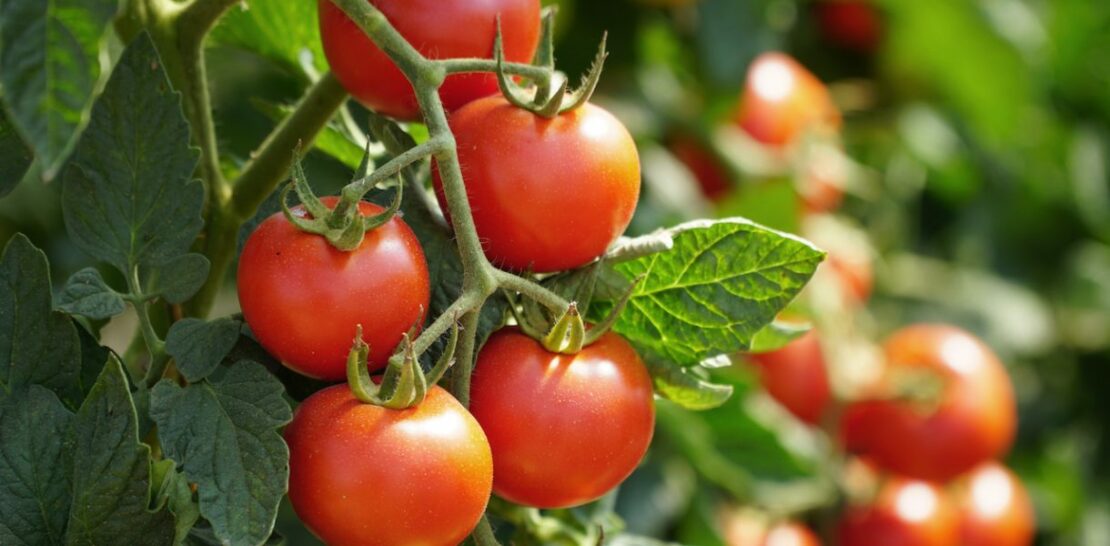In the world of gardening, tomato plants reign supreme as one of the most popular and rewarding crops to grow.
Home gardeners and professional farmers alike cherish the delight of biting into a ripe, juicy tomato, freshly plucked from the vine.
As with any beloved plant, there are countless tips, tricks, and methodologies that claim to produce the best possible fruit, yet one seemingly unusual practice continues to capture the attention and curiosity of gardeners everywhere: placing salt at the base of tomato plants.
This practice, backed by science, has been shown to yield benefits such as improved flavor, increased resistance to disease, and overall healthier plants.
In this comprehensive article, we will delve into the fascinating world of tomatoes and explore the reasons behind this seemingly unconventional practice, revealing how salt truly can be the key to unlocking your tomato plants’ full potential.
The Role of Salt in Soil and Plant Health
Before discussing the specific benefits of salt application for tomato plants, it is crucial to understand the role salt plays in soil and plant health in general. Salt, chemically known as sodium chloride (NaCl), is a naturally occurring mineral that is essential for the proper functioning of all living organisms. In soil, salt can impact plant health in a variety of ways, from influencing nutrient availability to affecting soil structure and water movement. It is the delicate balance of these factors that determines whether salt will be a helpful or harmful addition to your garden.
- Nutrient Availability: Salt is a source of essential nutrients for plants, primarily sodium (Na) and chloride (Cl). Sodium is important for maintaining the ionic balance within plant cells, while chloride aids in photosynthesis and other metabolic processes.
- Soil Structure: Salt can influence soil structure by causing soil particles to bind together, creating a more stable and well-aerated environment for plant roots. This improved soil structure can result in better water infiltration and drainage, which is critical for healthy plant growth.
- Water Movement: Through the process of osmosis, salt can help regulate the movement of water within plant cells, ensuring that plants remain hydrated and functioning optimally. However, excessive salt levels in the soil can lead to a phenomenon known as “salinity stress,” wherein the salt concentration outside the plant is so high that water is drawn out of the plant cells, causing dehydration and even death.
With a foundational understanding of salt’s role in soil and plant health, we can now delve into the specific reasons behind the salting of tomato plants, investigating how this practice can lead to increased flavor, disease resistance, and overall vitality.
Enhancing Flavor: The Salt-Tomato Connection
Perhaps the most enticing reason to put salt at the base of your tomato plants is the promise of a more flavorful fruit. Tomatoes are notorious for their complex and dynamic flavor profile, a result of the unique interplay between sugars, acids, and volatile compounds that contribute to the overall taste sensation. One critical factor in the development of these flavor compounds is the presence of sodium and chloride ions, which are derived from salt.
- Sodium: Sodium ions have been shown to play a crucial role in the development of the sweet, fruity, and savory notes that characterize a delicious tomato. Specifically, sodium ions help to balance the sugar-acid ratio in the fruit, resulting in a more palatable taste.
- Chloride: Chloride ions contribute to the overall flavor profile of tomatoes by enhancing the perception of savory, umami-rich compounds. In particular, chloride ions have been found to improve the taste of the amino acid glutamate, which is responsible for the umami sensation.
By putting salt at the base of your tomato plants, you are effectively supplying them with the sodium and chloride ions necessary to produce the most flavorful fruit possible. However, it is important to note that excessive salt levels can lead to undesirable consequences, such as reduced fruit yield and plant stress. As such, it is advisable to apply salt judiciously and monitor your plants for signs of over-application.
Boosting Disease Resistance: Salting Away Pathogens
Another compelling reason to put salt at the base of your tomato plants is its potential to enhance the plants’ resistance to disease. Tomato plants are susceptible to a wide range of pathogens, including bacteria, fungi, and viruses, which can wreak havoc on your crop and diminish your harvest. Interestingly, salt has been shownto possess antimicrobial properties that can help suppress the growth and spread of these harmful organisms, thereby protecting your tomato plants and ensuring a bountiful yield.
There are several mechanisms by which salt can bolster a tomato plant’s defenses against disease:
- Osmotic Stress: As previously mentioned, salt can cause osmotic stress in plant cells, drawing water out of the cells and making it more difficult for pathogens to invade. This increased resistance to cellular invasion can help prevent the spread of disease through the plant.
- Ion Toxicity: High levels of sodium and chloride ions in the soil can be toxic to certain pathogens, inhibiting their growth and reproduction. This can help to reduce the overall pathogen population in the soil, reducing the likelihood of disease outbreak.
- Induced Systemic Resistance: Salt has been found to stimulate a plant’s natural defense mechanisms, a phenomenon known as induced systemic resistance (ISR). When exposed to moderate levels of salt, tomato plants can activate a suite of protective genes that help to ward off pathogen attack and minimize the damage caused by infection.
While the application of salt can help to fortify your tomato plants against disease, it is essential to remember that excessive salt levels can be harmful to your plants and counterproductive to your disease-fighting efforts. Therefore, it is important to strike the right balance between providing your plants with the benefits of salt while avoiding the potential pitfalls of over-application.
Supporting Overall Plant Vitality: A Salty Foundation for Success
As we have seen, salt can play a significant role in enhancing the flavor and disease resistance of your tomato plants. However, the benefits of salt application do not stop there. When used appropriately, salt can contribute to the overall health and vigor of your tomato plants, setting the stage for a successful growing season and a bountiful harvest.
There are several ways in which salt can support the vitality of your tomato plants:
- Improved Nutrient Uptake: Salt can help facilitate the uptake of essential nutrients, such as potassium and calcium, by altering the electrical charge of the soil and making these nutrients more available to plant roots. This can lead to more robust and productive plants.
- Enhanced Root Growth: As mentioned earlier, salt can influence soil structure, promoting the formation of stable soil aggregates and a well-aerated environment for plant roots. This improved soil structure can stimulate root growth, leading to a more extensive root system capable of accessing nutrients and water more effectively.
- Stress Tolerance: Exposure to moderate levels of salt can help to toughen up your tomato plants, priming them to better withstand various environmental stresses, such as drought, heat, and pests. This increased stress tolerance can result in hardier plants that are better equipped to thrive in challenging conditions.
While the advantages of salt application are clear, it is vital to reiterate the importance of using salt judiciously and avoiding over-application. Maintaining a proper balance of salt in your soil is key to achieving the desired benefits without causing harm to your plants.
In conclusion, the practice of putting salt at the base of your tomato plants is grounded in solid scientific principles and can yield a multitude of benefits, from enhancing the flavor of your fruit to bolstering disease resistance and promoting overall plant health. By understanding the role of salt in soil and plant health, as well as the specific mechanisms by which it influences tomato plants, you can make informed decisions about salt application in your garden and unlock the full potential of your tomato crop. As with any gardening practice, moderation and diligence are key; by using salt judiciously and monitoring your plants for signs of over-application, you can create the optimal growing conditions for your tomatoes and enjoy the fruits of your labor in the form of a flavorful, abundant harvest.




